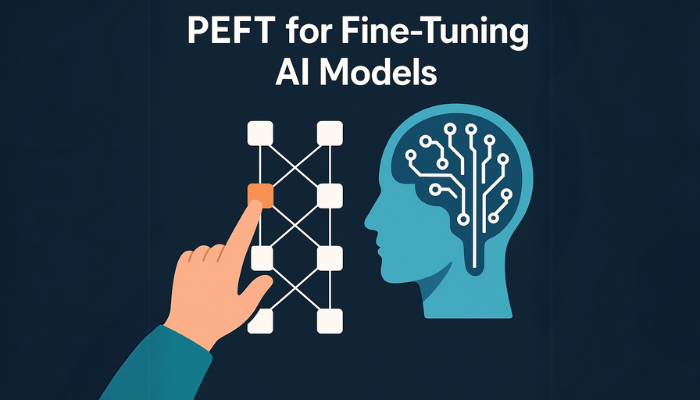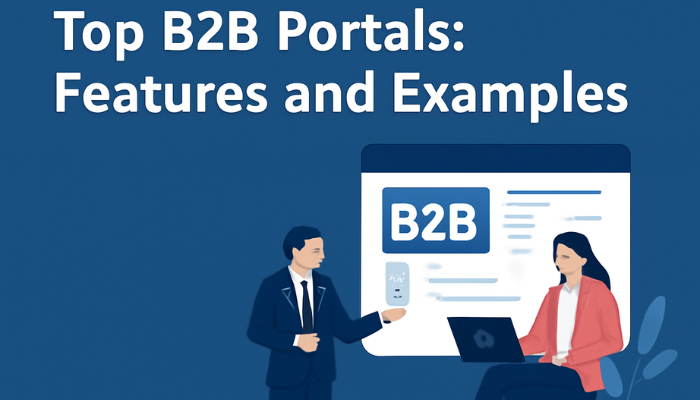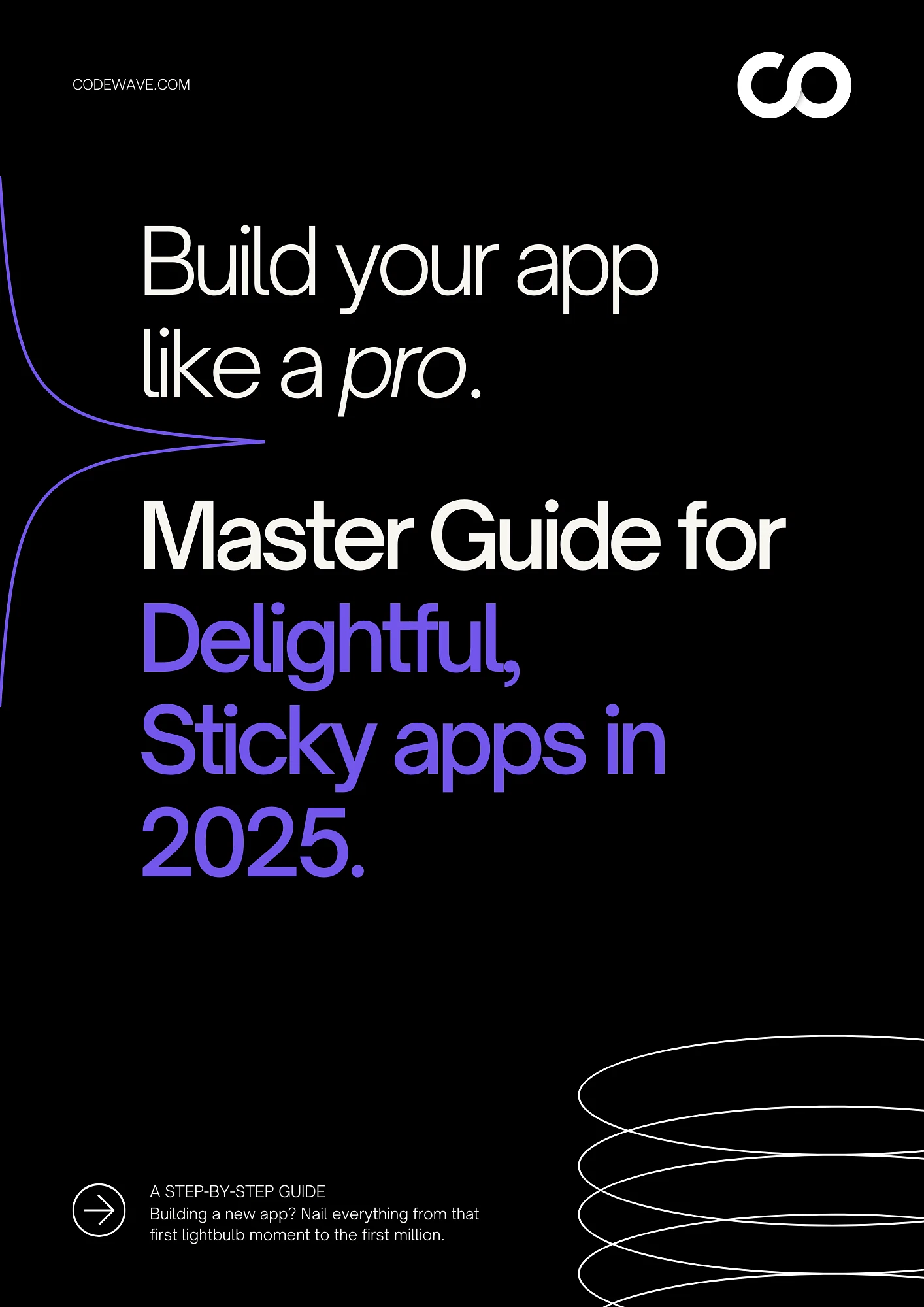When businesses want to customize an AI model to meet their specific needs, they usually adjust or “fine-tune” it. Traditional fine-tuning involves tweaking many parts of a large model, but this can be time-consuming, expensive, and require a lot of computing power. This process becomes harder to manage as models get larger, especially when your business doesn’t have unlimited resources.
Parameter-Efficient Fine-Tuning (PEFT) is a smarter way to approach this. Instead of adjusting every part of the model, PEFT focuses on optimizing only the essential parameters that really matter. This drastically reduces the amount of computing power and time needed, making AI customization faster and more affordable for businesses.
Studies show that PEFT methods like LoRA can reduce trainable parameters by over 95% with little to no impact on performance. This means businesses can get faster, cheaper AI customization without sacrificing quality.
In this blog, we will break down how PEFT works, its key methods, and how your business can apply it effectively.
What Is PEFT? A Smarter Way to Fine-Tune AI
Large AI models like ChatGPT are made up of billions of tiny adjustable parts called parameters. When you want to fine-tune one of these models for a new task; like helping it understand legal documents or medical reports, you’d normally have to update all of those billions of parts. That takes a lot of time, money, and computing power.
Parameter-Efficient Fine-Tuning (PEFT) is a better solution. In simple terms, PEFT is a technique that fine-tunes only the parts of the model that matter most for a specific task, while keeping the rest unchanged. This saves resources and still delivers high performance. Instead of adjusting the whole model, PEFT updates just a small part, around 1% to 10% of the total parameters. That’s like tweaking a few controls on a machine instead of rebuilding the whole thing.
How It Works at a Glance
Think of a huge AI model like a car. PEFT doesn’t rebuild the whole car, it just swaps out the tires or upgrades the engine for a specific road.
- It adds small pieces to the model (like adapters or prompts).
- Only those small pieces are trained for the new task.
- The original model stays frozen and unchanged.
You still get great results, but with way less effort.
Why PEFT Matters for Your Business
Most businesses use pre-trained models like GPT or BERT as a base and fine-tune them for specific tasks, say, customer support, legal analysis, or fraud detection.
Doing full fine-tuning for each use case gets expensive fast.
Here’s how PEFT helps:
- Reduces infrastructure load by skipping unnecessary parameter updates
- Minimizes risk of overfitting, especially on smaller custom datasets
- Accelerates time-to-market, allowing teams to iterate quickly
- Keeps base model stable, so you’re only layering in what’s needed
You get nearly the same performance as full fine-tuning, but at a fraction of the cost and time.
Full Fine-Tuning vs. PEFT: What’s the Real Difference?
If you’re still fine-tuning the full model, you’re burning time, compute, and budget. Here’s proof:
| Aspect | Full Fine-Tuning | PEFT |
| Resource Use | Trains all model parameters, which demands powerful GPUs and high memory. | Updates only a small set of parameters, saving up to 90% on compute costs. |
| Data Needs | Needs millions of labeled examples to train well. | Can work with just a few hundred or thousand examples (few-shot learning). |
| Speed | Slower training cycles, sometimes taking days or weeks. | Faster training, often done in hours or less, depending on model size. |
| Risk | More chances of overfitting, especially with smaller datasets. | Less overfitting since only a portion of the model is updated. |
So, how do these smarter fine-tuning methods actually work in real business settings? Let’s unpack it.
PEFT Techniques and How They Work
PEFT techniques make fine-tuning AI models faster and more efficient by adjusting only what’s needed for peak performance. Let’s take a look at four of the most effective methods that can quickly boost your AI model’s capabilities and deliver stronger results.
1. Adapters: Quick, Low-Cost Customization
Adapters are small sets of layers; basically, tiny blocks of code that you insert between the existing layers of an AI model. Instead of retraining the entire model, you just train these new blocks. The original model stays unchanged.
Why this helps: You use much less time and computing power. Plus, you can create different adapters for different tasks, like one for English, another for Spanish, or one trained to understand legal documents.
Use it when:
- You’re working with multiple languages or regions
- You need the model to handle specific fields like finance or healthcare
- You want to try different use cases without building new models
Pro tip: Adapters act like plug-ins; easy to add, remove, or swap, so you can customize your model without rebuilding it every time.
2. LoRA (Low-Rank Adaptation)
LoRA works by inserting a small, math-based shortcut inside the model’s layers. It doesn’t add entirely new blocks like Adapters do. Instead, it changes how certain weight calculations are done using low-rank matrices, think of these as big tables of numbers that guide how the model makes decisions. LoRA tweaks only the most important parts of these tables, allowing you to update the model efficiently without retraining everything.
Why this matters: You can fine-tune large models like GPT or LLaMA without needing high-end GPUs. It reduces memory use and speeds up training, which is perfect if you’re working with limited hardware or shared infrastructure.
Use it when:
- You’re running multiple experiments on large language models
- You want to avoid full retraining and cut down on compute cost
- You need to test and deploy changes quickly
Pro tip: LoRA is ideal when you want performance improvements without the extra complexity of managing separate layers or model versions.
3. QLoRA (Quantized LoRA)
QLoRA takes LoRA a step further by also shrinking the size of the numbers used inside the model, a process called quantization. This makes the model much smaller and allows it to run using far less memory and computing power.
Why this changes the game: It’s perfect for running AI on devices with limited power—like phones, small servers, or edge devices. You still get solid performance, but without needing expensive GPUs or cloud setups.
Use it when:
- You’re running AI on devices with limited memory or processing power
- You want quick responses without relying on cloud infrastructure
- You’re handling models on edge devices or IoT systems
Pro tip: QLoRA is perfect for taking large language models and making them lightweight enough to use anywhere, even on the edge.
4. Prompt Tuning & Prefix Tuning
These methods don’t change the AI model itself. Instead, you train short pieces of text; called prompts or prefixes, that are added to the input. These guide the model to respond the way you want for specific tasks.
Why it works well: The original model stays exactly the same. You don’t retrain anything, but still get more accurate, task-specific results. It’s like giving the AI better instructions, not changing how it thinks.
Use it when:
- You’re handling tasks like classification, Q&A, or summaries
- You want custom responses without touching the model
- You need quick updates in fast-paced areas like customer support
Pro tip: Prompt tuning is great when you want fast, focused output with very little setup or technical work.
What’s Best for You? Quick Side-by-Side
| Technique | What You Train | Best For | Why It’s Useful |
| Adapters | Small add-ons to the model | Using the model in different languages or fields (like legal or medical) | Easy to swap and adjust for different tasks without retraining the whole model. |
| LoRA | Important parts of the model | Working with large language models (LLMs) for multiple tasks | It helps get high performance while using fewer resources like memory and processing power. |
| QLoRA | Compressed model weights + LoRA | Running AI on devices with limited power (like mobile or IoT) | Uses less memory but still delivers strong accuracy—ideal for low-power environments. |
| Prompt/Prefix Tuning | The input text (prompts) | Fast, task-specific model adjustments | Changes how the model responds to tasks without needing to alter the core model. |
Now that you know the difference, let’s see how PEFT actually delivers value in real business use.
Real Business Impact of PEFT, Explained
You’re not here for buzzwords. You want to know how PEFT actually helps you get things done, faster, smarter, and without setting your infrastructure on fire. Here’s how PEFT plays out across real industries.
1. E-commerce: Adaptive Recommendations Without Full Retraining
What You Train: Adapter layers added to the model
Best For: Updating product recommendations based on new trends or customer behavior
Why It’s Useful: PEFT lets you update recommendations quickly (hours instead of weeks) without retraining the entire model. The core system stays intact while adapting to shifts in customer preferences, like a viral product or holiday shopping.
2. Healthcare: Patient-Specific Intelligence That’s Safe
What You Train: Specific adjustments for different patient profiles (using LoRA)
Best For: Personalizing medical recommendations for patients with different conditions or demographics
Why It’s Useful: PEFT allows you to make targeted changes, such as treating diabetic patients differently from those recovering from surgery, without retraining the full model. You can adjust the system to prioritize symptoms based on local health trends, keeping everything efficient and safe.
3. BFSI: Quick Adaptation to Evolving Fraud Signals
What You Train: Relevant parts of the model using QLoRA
Best For: Adapting fraud detection models to new, evolving transaction patterns
Why It’s Useful: PEFT allows you to quickly adjust the fraud detection system to tackle fresh fraud patterns, even with limited GPU resources. This approach focuses on recent patterns rather than outdated data, enabling faster updates and deployment. Unlike traditional methods, this makes real-time fraud detection possible on customer-facing systems without the high compute costs.
4. CX Teams: One Core Model, Many Customer Voices
What You Train: Prompts or prefixes for specific languages, tones, and emotions
Best For: Personalizing customer interactions without altering the core model
Why It’s Useful: PEFT lets you adjust how your AI interacts with customers by adding language and cultural nuances, without touching the core product or service logic. This allows scalable multilingual support while keeping the original model intact. The result is more personalized, human-like responses without the complexity of maintaining multiple models.
5. Logistics: Route Intelligence That Reacts in Real-Time
What You Train: Micro-updates in routing or warehouse optimization models using adapter-based PEFT
Best For: Adapting to real-time supply chain changes like weather, delays, or inventory shifts
Why It’s Useful: PEFT helps you make quick updates to your logistics models based on immediate changes, like local delivery conditions or new product types. This keeps your system flexible and responsive without the need for full retraining. It ensures smoother operations and prevents performance bottlenecks in fast-moving supply chains.
6. Gaming: Personalized Player Experience Without Heavy Builds
What You Train: Character behavior and interaction flow with PEFT layers
Best For: Personalizing player experiences without increasing game size
Why It’s Useful: PEFT allows you to adapt your game in real-time based on player behavior. Whether it’s adjusting AI defense for aggressive players or enhancing character arcs for story-driven players, PEFT provides an efficient way to personalize experiences without overloading the game with extra logic. The base model stays intact, offering a lighter, more efficient game build.
Ready to put PEFT into action? Here’s a simple walkthrough to help you get started quickly.
A Simple Guide to PEFT Deployment Framework
Deploying PEFT for AI models doesn’t need to be an overwhelming process. With the right framework and tools, you can adapt large models quickly and efficiently, optimizing performance for your specific use case.
Let’s break down the framework in easy-to-follow steps.
Step 1: Choosing Your Base Model
Start by picking a pre-trained model like LLaMA2 as your foundation. Since it’s already trained on a massive dataset, you don’t need to start from scratch. This saves time, cuts costs, and gives you a strong, flexible base that can handle a wide range of tasks without heavy lifting.
Step 2: Selecting the PEFT Method
Once you’ve chosen your base model, the next step is to decide which PEFT technique fits your goals. Go for LoRA if you’re working with large models and want to save GPU memory, Adapters if you need quick domain-specific tweaks, or QLoRA for ultra-lightweight fine-tuning on limited hardware. Your choice should align with your project’s size, resources, and the level of customization you need.
Step 3: Loading with the PEFT Library
Next, load your base model using the PEFT library. This tool helps you easily apply methods like LoRA, Adapters, or QLoRA without diving into complex code. It takes care of the technical setup so you can get straight to fine-tuning. It’s a major time-saver and makes working with PEFT methods much simpler.
Step 4: Fine-Tuning with Custom Datasets
Now that your model is ready, fine-tune it using your own datasets. Whether it’s fraud detection or customer service data, this step helps your model learn from the examples that matter to your use case. You’re basically teaching the model how to handle your specific tasks more accurately.
Step 5: Optimizing with Tools for Efficiency
To make fine-tuning smoother and faster, use specific tools built for performance. Accelerate helps you train across multiple GPUs with minimal setup. BitsAndBytes enables 8-bit or 4-bit quantization, reducing memory load without sacrificing much accuracy. Hugging Face Datasets lets you easily load and preprocess massive datasets. These tools cut down training time, reduce hardware strain, and make large-model fine-tuning far more practical.
Now that you know how to deploy PEFT, let’s figure out if you should build or buy.
Build or Buy: What Makes Sense for PEFT?
By now, you know PEFT makes fine-tuning large models lighter, faster, and more cost-efficient. But here’s the next big decision: should you build your PEFT setup in-house, or should you partner with a team that already has the tools and expertise?
The answer depends on your goals, resources, and how fast you need results. Let’s break it down.
1. When Building In-House Makes Sense
If your company already has a strong AI team and the right hardware (like GPUs), building your own PEFT setup could be a smart move. It gives you full control, which is useful for sensitive or highly specific use cases.
Consider building in-house if:
- You have skilled ML engineers and access to powerful machines
- Your project is long-term, unique to your business, or needs extra privacy
- Your team already takes care of security, compliance, and data rules
Building in-house means more freedom, but also more work. You’re in charge of keeping everything running, updated, and efficient.
2. When Buying or Partnering is the Smarter Choice
If your team is short on time, skills, or tools, working with an outside partner can save you a lot of effort. A good partner can set up and fine-tune PEFT models for you—no need to build everything from scratch.
You should consider partnering if:
- You need a ready-to-use solution in less than a month
- Your product must follow strict rules (like HIPAA or GDPR)
- You don’t have the tools or setup needed for model training and deployment
This way, your team can focus on building your product, while your partner handles the technical work behind the scenes. It’s ideal when speed and compliance matter most.
A Simple Checklist to Guide Your Call
Use these questions to help you decide between building in-house or working with a partner:
- Model type: Are you working with an open-source model like LLaMA, or a closed one with restrictions?
- Data: Do you have at least 1,000 labeled examples to train your model properly?
- Privacy rules: Will your model use sensitive data like personal or health information?
- Update frequency: Will you need to update the model every day, weekly, or just occasionally?
- Where it runs: Will the model be used in the cloud, on your own servers, or on edge devices like phones or sensors?
If most of your answers lean toward “build,” and your team can handle the work, go for it. But if time, scaling fast, or meeting compliance is more important, bringing in a trusted partner is the smarter move.
Before you commit to a PEFT strategy, it’s important to know what can actually go wrong.
What Can Go Wrong with PEFT (and How to Fix It)
Every tech decision comes with trade-offs. PEFT isn’t an exception. Here’s a look at real-world challenges businesses face with PEFT, and how you can stay ahead of them.
Challenge 1: Data Drift
As your business evolves, so does your data. What worked last quarter may be totally outdated today. This drift silently breaks your finely tuned PEFT models, especially in fast-changing industries like e-commerce or finance.
Solution: Build an active learning system that regularly updates your model using new, labeled data. This keeps your model current without needing to start from scratch every time.
Challenge 2: Bias in PEFT Layers
Fine-tuning only a subset of model parameters is efficient, but it can also amplify biases if the base model already has blind spots. You may end up with localized improvements that behave unpredictably in production.
Solution: Use explainability tools to review how the model is making decisions. These dashboards can reveal hidden bias early, before it becomes a problem in real-world use.
Challenge 3: Over-Automation
Just because you can automate it, doesn’t mean you should. Over-automating with PEFT-tuned models, especially in high-stakes decisions like healthcare diagnostics or loan approvals, can lead to trust issues or critical errors.
Solution: Always ensure that there’s a human overseeing high-risk tasks. Consider the model as an assistant, not the final decision-maker. Let it support decision-making, but let experts remain in control for critical decisions.
Challenge 4: Regulatory Failures
PEFT models deployed without checks can easily fall out of compliance, especially when dealing with PII, health records, or financial data. It’s not just risky, it’s legally dangerous.
Solution: Start with regulatory compliance in mind. Use checklists and frameworks that align with standards like HIPAA or GDPR. If you’re working with a partner, such as Codewave, they’ll ensure your model follows all required compliance protocols from day one. This removes the regulatory burden from your team and minimizes risk.
How Codewave Accelerates Your PEFT Journey
Implementing PEFT isn’t just about model tweaks, it’s about building a scalable, compliant, and future-ready AI pipeline. That’s where Codewave steps in.
- AI/ML & GenAI Development: Our engineers help you integrate PEFT methods like LoRA or QLoRA into production-ready pipelines, ensuring rapid tuning without draining resources.
- Custom Software + Cloud Infrastructure: We build lightweight, fine-tuned AI systems that run efficiently on cloud-native or hybrid architectures, tailored to your enterprise needs.
- Data & Analytics Development: With smart data versioning and labeling strategies, we help you optimize even small datasets to achieve high task accuracy with minimal training cycles.
- Security & Compliance: Serving BFSI and HealthTech, we ensure your PEFT models meet HIPAA, GDPR, and domain-specific compliance, from data handling to deployment.
We believe that efficiency isn’t just tuning fewer parameters, it’s aligning AI to real-world velocity, cost, and scale.
Thinking of launching PEFT-powered AI in 30 days or less? Talk to our team to get started.
Final Say
Parameter-efficient fine-tuning (PEFT) is no longer just a choice, it’s the smart way for businesses to scale AI quickly and accurately. It lowers infrastructure costs, speeds up deployment, and allows models to keep learning with minimal effort.
To make this work, you need more than just the right tools, you need a solid strategy. That’s where Codewave’s AI/ML Development service comes in. We help you choose the right base models and customize them with PEFT to create AI agents that are fast, accurate, and compliant.
Ready to launch smarter AI with fewer resources? Talk to Codewave and discover how PEFT can transform your automation, making it faster, safer, and more efficient.
Codewave is a UX first design thinking & digital transformation services company, designing & engineering innovative mobile apps, cloud, & edge solutions.







